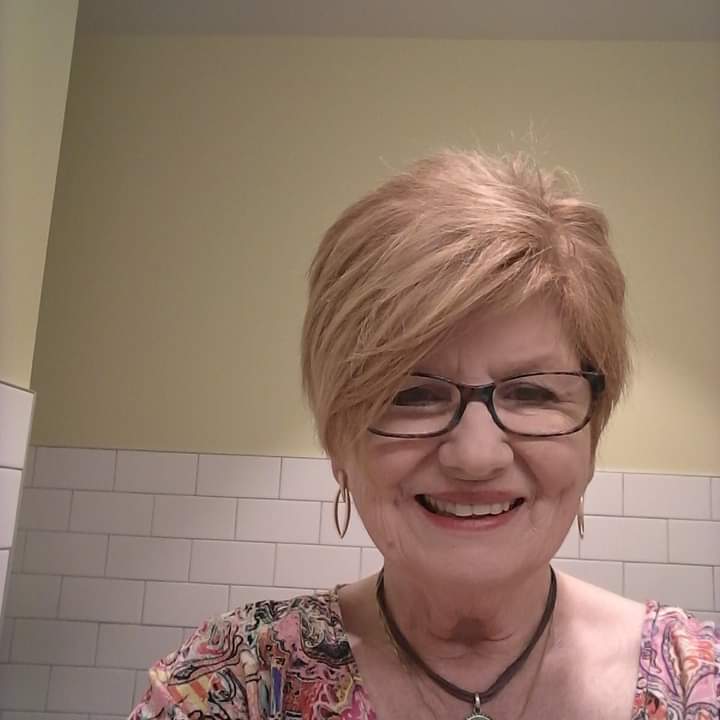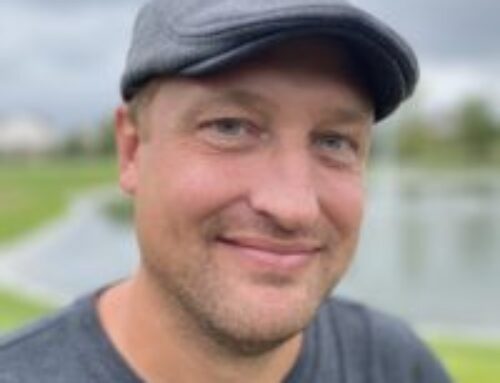Audrey writes: I was an active advocate for family members and for those suffering Serious Mental Illness in central Kansas. husband I also facilitated a NAMI (National Alliance of Mental Illness) support group, and taught Family to Family education classes for family members of the mentally ill. My husband and I have retired to the state of Oklahoma, nearer to family. I continue to advocate for change in the laws regarding SMI by way of online advocacy groups.
My husband and I sat quietly, but anxiously, in the crowded courtroom, waiting the Judge’s entrance.
The judge who would decide our 19 year old son’s fate for the next several years.
We whispered words of comfort to each other, shared nervous giggles and tried to remain calm, as we waited.
This was our final trip to the local county courthouse. We had hired an attorney to defend our son on his felony battery charge. We had also pleaded with the attorney to help the Judge to understand our son’s illness of Schizo-Affective Disorder, which, in combination of his drug use had brought on an episode of psychosis. My husband and I had seen the signs of a coming crisis, but knew we were helpless to stop it. Our son lived with us, so we knew he had been manic and on an alcohol/ drug binge for days.
Our normally mild mannered son had committed a violent act against a friend. Someone he knew and loved. This was totally out of character for him. My husband had witnessed this act and had called the police.
My husband and I were in shock, crushed at this unbelievable crime by our normally quiet son.
In all his years of illness and addictions, Adam had never shown signs of violence. His psychosis was evident to us, on that day.
The Judge had been made aware of our son’s diagnosis. We were praying it would make a difference in his sentencing.
What we were going through was every parent’s nightmare.
Sadly, this scenario is played out in many courts of law, daily, across our nation.
Not all victims of mental illness/brain disorders commit a violent crime. Statistics state that only 1% of those affected by Schizophrenia commit violent crime.
During the past year, my husband and I had watched, helplessly, as our son spiraled downward with drugs and alcohol following the death to suicide of his beloved sister, Candace. Candace was my second child to die from suicide. Her older brother, my compassionate and fun kid, Marty, had also taken his life in a Psychiatric hospital 6 years before. She had never quite recovered from his death.
Candace was 8 years older than Adam, but they had remained close, even after she left home at age 18, to live nearer her Dad. Although the two of them were only “half” brothers and sisters, there was never any distinctions made because of this. The two of them shared jokes and he spoke freely to her about his friends, school, and part time job.
Adam was completely devastated by her death. While Adam had had a few months of sobriety up to that point, all efforts to stay clean were quickly gone upon our return from his sister’s funeral.
From the age of 14, when Adam had begun experimenting with meth and other drugs, to age 18, he had been hospitalized for attempted suicide 4 times, and in drug treatment programs 3 times. He did well in drug treatment programs. Always a very bright child, Adam seemed to thrive on the structure and education while in treatment. We were always so hopeful that THIS time it would work. He did well for a week or so afterward, but always falling back into the trap of drug use.
Once, following an expensive wilderness treatment program, he was clean, and on medication for his mental illness for two months. We finally had our son back!
Inevitably, he stopped taking his meds, returned to old friends, and the drug use. Through family therapy, we began to understand that he was medicating his mental illness symptoms through his drug usage.
My husband and I were determined to intervene through treatment options as much as possible. We had learned that when he reached age 18, he would be considered an adult and we would no longer have control over his treatment options. Our son’s self-destructive lifestyle was breaking our hearts on a daily basis.
Adam’s first diagnosis, at age 14, was Psychosis NOS (Not Otherwise Specified). At age 19, he was evaluated at a state psychiatric hospital and given a diagnosis of Schizo-Affective/Bi Polar Disorder. The continual use of street drugs had exacerbated his mental illness symptoms.
Even though I understood my son’s need to medicate an illness with almost unbearably painful symptoms, his Dad and I grew frustrated, angry and resentful of the seemingly endless cycle of drug treatment, a few weeks of wellness and medication, then hospitalization, medication, drug use, juvenile detention, court dates, drug treatment, etc.
More than once, I said to him, “Adam, you have a diagnosis, you can have ANY amount of legal drugs. Why do you use illegal street drugs?” His answer was always the same. “Mom, I would rather be called a druggie than to be called “mental”.
Oh my, the stigma associated with that word!
As the Judge entered the crowded courtroom, my husband and I stood quickly.
The state psych hospital had evaluated Adam as to his ability to know and understand his crime. We listened carefully as the judge read the state hospital’s recommendation for our son aloud. Due to HIPPA laws, we had not gotten a copy of this report.
Basically, the report stated that Adam did have a serious mental illness which could cause temporary psychosis, but that he was capable of understanding his crime, and knew right from wrong.
(Excuse me, I thought, but isn’t psychosis a reality break? How could THEY know he was aware of what he was doing?)
I don’t remember much of what else was said, until I heard the word we had been dreading for months.
Guilty.
The word sent chills through my heart.
Sentenced to 6 to 10 years in the state penitentiary.
Yes, the judge concluded, our son had a serious mental illness, which can cause a break from reality. But the legal system doesn’t care why he committed the crime. He did it. He is now officially a criminal.
Our son was now and forever to carry the title of “felon”, in addition to the stigma inducing title of “mental”.
After Adam served 5 years in prison, we noticed more symptoms that weren’t present before. PTSD and high social anxiety were the top two. We also began to see signs of OCD, especially obsession with germs and hand washings.
Adam is 30 years old now, and lives with his Dad and I.
Our beloved son is very ill, still untreated, and is made barely functional by his many symptoms. However, he is an adult with rights. There is little we can do to force desperately needed treatment. He isolates almost totally in his room, is non communicative, is incapable of self-care, and cannot be left alone for more than a day at a time. Yet, it is questionable as to whether the system views him as a danger to self. “Danger to self or danger to others” is the legal requirement for involuntary commitment.
His illness is one our son can’t accept. The part of his brain affected by the illness tells him he is not ill. The medical term is “anosognosia”, or lack of insight.
Although prison is a horrendous place for someone suffering mental illness/brain disorders, there is less opportunity in prison to commit suicide. Possibly, his life was saved by his prison sentence. Our son seems to have a “survival” instinct we didn’t see before his incarceration.
My husband’s and my faith has been made stronger through our journey with mental illness. We have learned patience, acceptance and the meaning of true, unconditional love.
I have repeatedly asked our Lord to spare Adam’s life. That prayer is answered. Thank God!
This Mom’s heart simply cannot endure another child loss.
As long as there is life, there is hope.








Leave A Comment